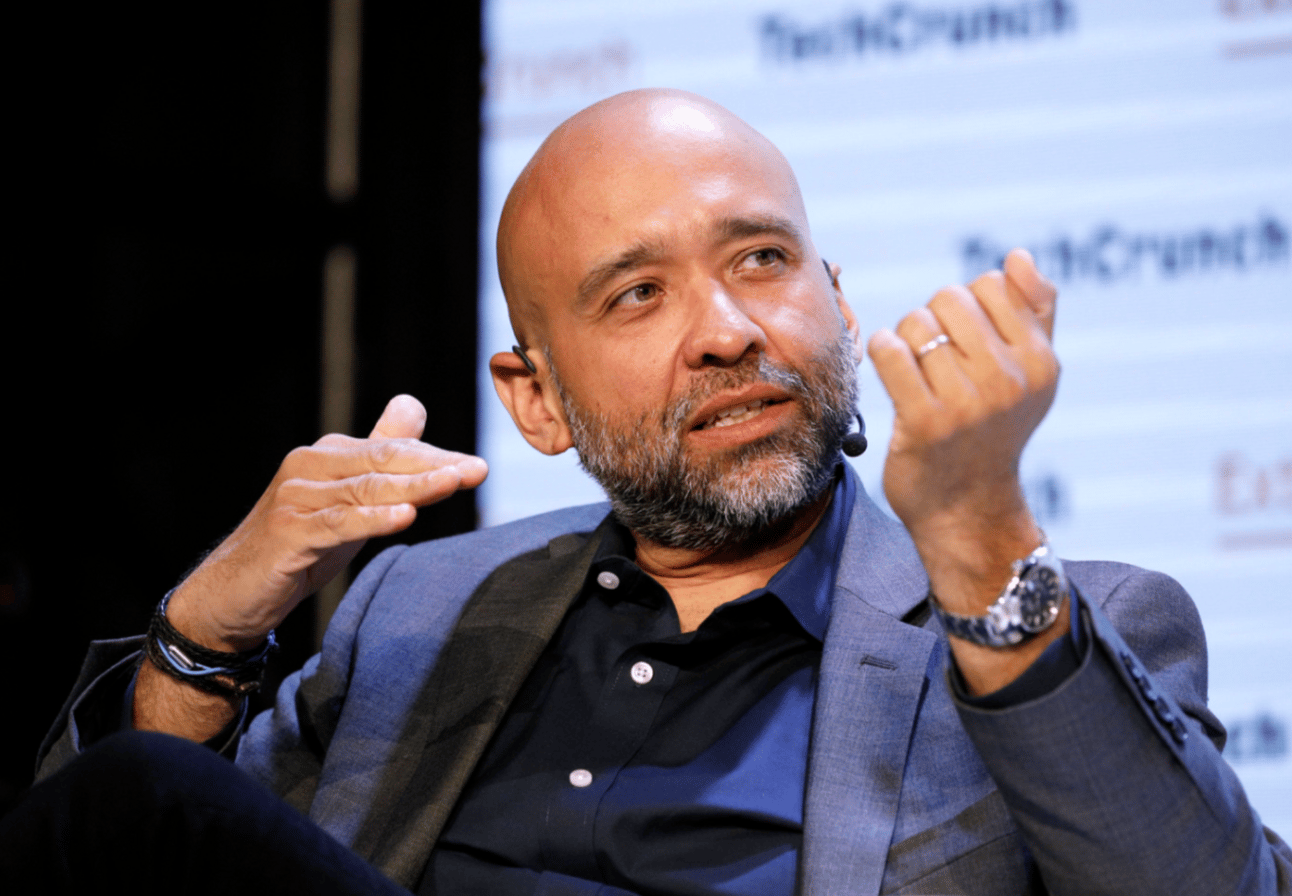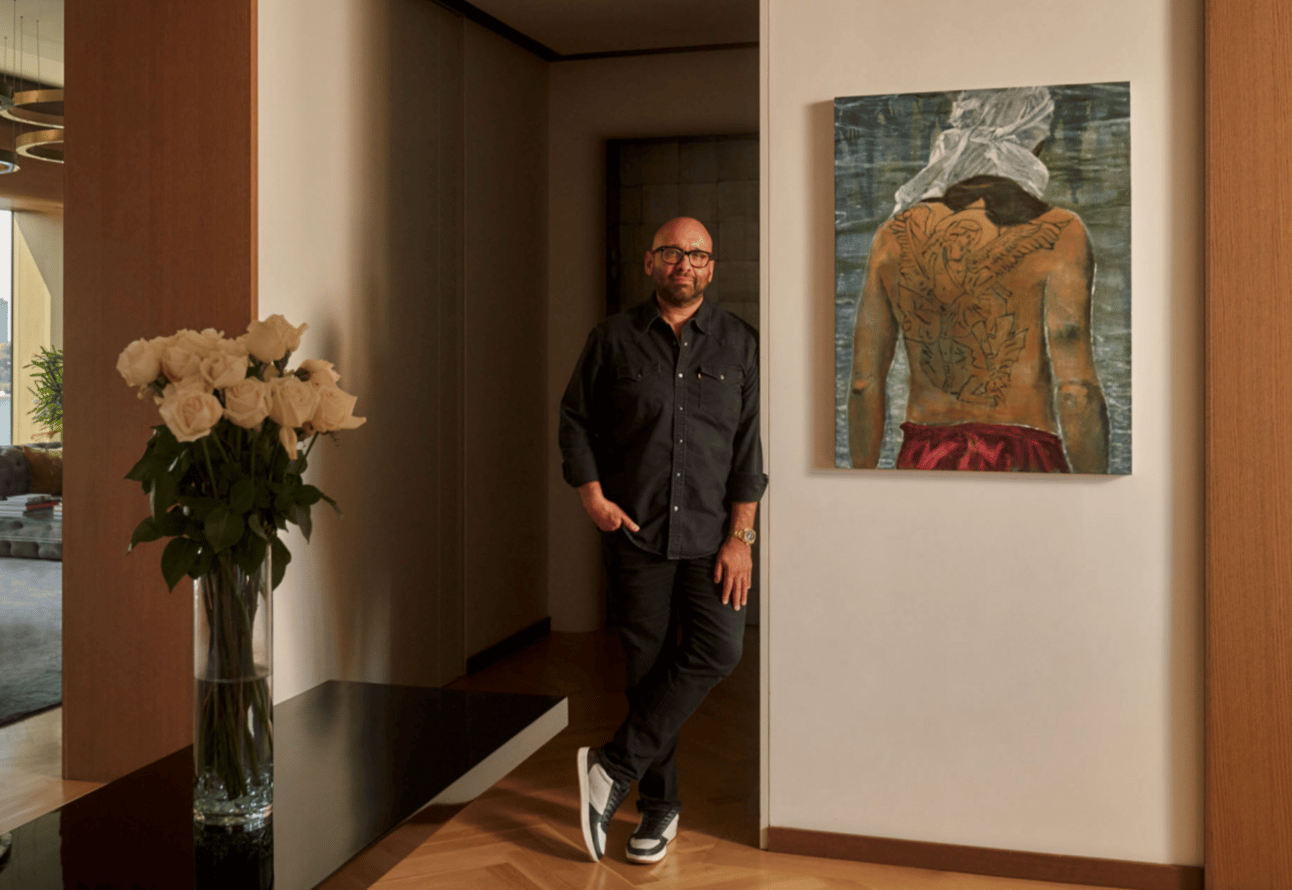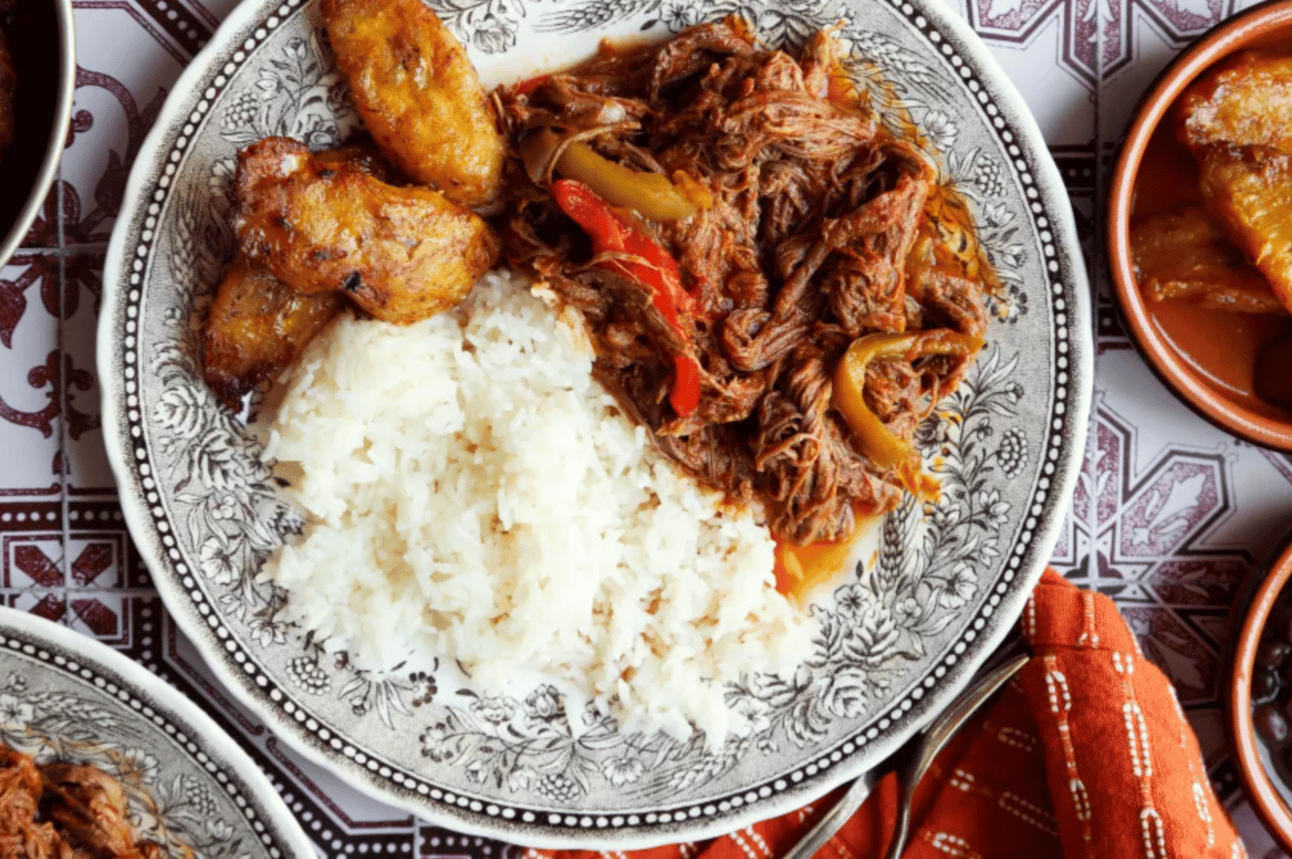INTRODUCTION
Saludos! Welcome to this week’s edition of the Minority Majority newsletter. Today, we dive into the inspiring stories of three Latino trailblazers in tech, music, and space exploration. From David Cancel’s career as a 5X tech founder, to Shakira’s first album in 7 years, and a historic first in aerospace for Diana Trujillo–no te lo quieres perder. (You don’t want to miss it.)
So, grab your afternoon cafecito, jump in, and if you enjoy, please forward the newsletter to a coworker, friend, or familia! With your support and sharing is how we grow and are able to keep writing these stories every week. ☕️
BUSINESS
David Cancel: The 5X Founder Paving the Way for other Latinos in Tech

Courtesy of Salesflare.
As a standout 5X Founder, having secured multiple exits and amassed over $100M in funding, David Cancel challenges the norm in a tech landscape that typically sees Latino founders underrepresented in venture capital and startup success stories.
Born to a family from Ecuador and Puerto Rico, he grew up speaking Spanish and had to quickly learn English when he started school in the Bronx, New York. This challenge didn't stop him; it only made him more determined.
As a kid, David felt like he didn't fit in because of his background and the different neighborhoods he lived in. But he didn't let this stop him. He was smart and learned quickly, which helped him adapt to new situations. Cancel's academic journey took him to Queens College, where he pursued Computer Science and Accounting.

Courtesy of Kimberly White/Getty Images for TechCrunch.
He was the first in his family to go to college, but he left before finishing, because he was more interested in the early days of the internet. This curiosity led him to start working at tech startups. The decision to leave college didn't hold him back; instead, it marked the beginning of an impressive career in technology.
David's big break came when he started his own companies. He founded Compete.com, Lookery, Ghostery, and Performable, all of which were successful and eventually sold to bigger companies.

Courtesy of SaaStock.
The Performable acquisition by Hubspot was a significant milestone, as David stepped into the role of Chief Product Officer. His visionary approach to product development and leadership significantly expanded the company's engineering team from 20 to 100 engineers. David’s tenure was characterized by transformative growth, as he was instrumental in scaling the company's product development capabilities and fostering a culture of innovation, prior to Hubspot’s IPO.
In 2014, David’s entrepreneurial bug hit once again and alongside Elias Torres, they cofounded Drift, a company that reimagines business-customer communication with its messaging software. Drift quickly attracted VC funding and the company grew quickly, raising over $107M throughout his tenure as Co-Founder and CEO.

Courtesy of Sequoia Capital Publication.
With Drift, David and Elias focused on making it a place where diversity is valued. They wanted to make sure it was a company, where people from all backgrounds could find a place in the tech world.
Drift was ultimately acquired through a majority stake investment from Vista Equity Partners in 2021 at a $1B valuation and later merged with Salesloft.
Beyond achieving financial success, David actively gives back by mentoring young entrepreneurs, particularly those from diverse backgrounds, and champions diversity in the arts by collecting and promoting works from underrepresented artists and as a board member of the Whitney Museum of American Art.

Portrait of David Cancel with Armig Santos, S.M.A., 2022. Courtesy of Cancel.
David Cancel's rise from a Bronx kid to a tech industry leader exemplifies how persistence and creativity can defy the odds, especially for Latino entrepreneurs. His journey is a testament to the impact one can make with the right mix of determination and innovative thinking, encouraging the next wave of entrepreneurs to challenge the norms and shape the future of technology.
CULTURA
From Barranquilla to Global Stardom: Shakira Unveils Her Most Personal Album Yet

Shakira holding the Emerald Edition of her latest album. Courtesy of Shakira via X.
Shakira is back with her first new album in seven years, "Las Mujeres Ya No Lloran" (Women No Longer Cry), marking a significant return for the Colombian superstar. This album, rich with personal themes and vulnerability, showcases Shakira's journey of healing and empowerment, featuring collaborations with artists like Bizarrap, Rauw Alejandro, Cardi B, and Grupo Frontera.
Growing up in Barranquilla, Colombia, Shakira, the daughter of a Lebanese father and a Colombian mother, was immersed in diverse cultural influences from a young age. She began belly dancing and writing songs as a child, showcasing her talents in local talent shows.

Shakira at a young age. Courtesy of Marca.
Her big break came when a theater producer helped her audition for Sony Corp., leading to her first record deal. Despite the modest success of her initial albums, Shakira's career soared with "Pies Descalzos" in 1995, establishing her as a Latin music sensation.

Screenshot from Hips Don’t Lie Music Video.
Shakira's ambition didn't stop at Latin music. She aimed for global stardom, successfully crossing over to English-speaking markets with albums like "Laundry Service." Hits like "Whenever, Wherever” and "Hips Don't Lie" cemented her status as a pop icon.

Shakira’s Oral Fixation Vol. 2 Album Cover.
She continued to blend Latin and English in her music, winning numerous awards, including Grammys and Latin Grammys, for her innovative sound and electrifying performances. Her bilingual talents shone through in albums like "Fijación Oral, Vol. 1" and "Oral Fixation, Vol. 2," blending Latin, rock, and pop sounds to critical and commercial success. "Waka Waka (This Time for Africa)," the official anthem for the 2010 FIFA World Cup, became a global sensation, earning her a spot as one of the most influential international Latin artists.

Courtesy of Jaume De Laiguana.
7 Years from her last album, “El Dorado”, on March 22, 2024 Shakira dropped "Las Mujeres Ya No Lloran,” which is more than just an album; it's her statement of resilience and transformation. Coming after a period of personal challenges, including a tax fraud trial and her breakup with Gerard Piqué, the album resonates with themes of strength and rebirth.
Hits from the album, like the powerful "Shakira: Bzrp Music Sessions, Vol. 53," have already topped charts worldwide (and broke 14 Guinness World Records), proving Shakira's enduring appeal and artistic evolution.

Shakira at United Nations Press Meeting. Photo Courtesy of Anthony Behar.
Beyond her musical achievements, Shakira is a dedicated philanthropist and advocate through her Pies Descalzos Foundation. She has also served as a UNICEF goodwill ambassador, using her platform to support children in need around the globe. With "Las Mujeres Ya No Lloran," Shakira not only continues to captivate audiences with her music but also inspires with her journey of personal growth and commitment to making a difference.
IMPACTO
From Colombia to the Cosmos: Diana Trujillo’s Historic NASA Achievements

Courtesy of Al Jazeera.
Diana Trujillo has made history as the first Latina to graduate from the NASA Academy and become a NASA Flight Director. Breaking through the barriers of a traditionally homogeneous aerospace industry, Trujillo's Colombian roots and tenacious spirit have propelled her from Cali, Colombia, to the control rooms of NASA, where she now leads critical space missions.
Moving to the U.S. at just 17 with the firm goal of contributing to space exploration, Trujillo overcame numerous challenges, including language barriers and financial constraints. Her dedication saw her balancing jobs, such as housekeeping, with her studies, demonstrating her unwavering commitment to her dreams.

Courtesy of NASA.
Trujillo’s academic journey took her from community college to earning degrees in aerospace engineering from the University of Florida and the University of Maryland, showcasing her exceptional intellect and drive.
At NASA, Trujillo quickly made her mark, taking on pivotal roles in the Mars Curiosity rover mission and becoming a leading figure in space exploration. Her leadership extends beyond mission control, as she aims to bridge the gap between space exploration and public engagement. Trujillo co-created and hosted "#JuntosPerseveramos," NASA's first Spanish-language broadcast of a planetary landing, making the wonders of space more accessible to millions worldwide.
Diana Trujillo's introduction of the 'Somos Flight' insignia during her debut as a NASA Flight Director wasn't just a personal milestone; it represented a broader, more inclusive vision for space exploration. The insignia, bearing the name 'Somos'—Spanish for 'we are'—carries a profound message of unity and collaboration. It underscores the belief that space exploration is a collective human endeavor, transcending individual achievements to highlight the power of working together towards common goals.

Courtesy of America Digital.
Trujillo's accolades, including the Boyaca Cross from Colombia, recognize her contributions to STEM and her role as a pioneer for women, especially Latinas, in the field. Her story, from working as a housekeeper to leading space missions, emphasizes the power of passion and education in overcoming obstacles and achieving one’s dreams.
EN LA COCINA
How to Make: Cuban Ropa Vieja

Ropa Vieja. Courtesy of Jonathan Melendez, Food.Com.
Ropa Vieja is a classic Cuban dish (and one of my favorite meals to cook) that translates to "old clothes" in English. It's a savory and comforting stew made with shredded beef, vegetables, and aromatic spices. Here's a recipe for you to try making Cuban Ropa Vieja at home:
Ingredients:
2 pounds flank steak or skirt steak
1 large onion, thinly sliced
1 green bell pepper, thinly sliced
1 red bell pepper, thinly sliced
4 cloves garlic, minced
1 can (14.5 ounces) diced tomatoes, undrained
1 cup beef broth
1/2 cup dry white wine (optional)
1 tablespoon tomato paste
2 teaspoons ground cumin
1 teaspoon paprika
1 teaspoon dried oregano
Ground black pepper, to taste
Salt, to taste
2 bay leaves
2 tablespoons olive oil
1 cup frozen peas (optional)
1/2 Cup Olives
2 tablespoons capers
1/4 cup jarred pimientos
Cooked white rice, for serving
Fresh cilantro or parsley, chopped, for garnish
Instructions:
Prepare the Meat:
Season the flank steak with salt and pepper on both sides.
In a large skillet or Dutch oven, heat 1 tablespoon of olive oil over medium-high heat. Add the steak and sear it on both sides until browned, about 3-4 minutes per side. Transfer the steak to a plate and set aside.
Sauté the Vegetables:
In the same skillet, add the remaining tablespoon of olive oil. Add the sliced onions, bell peppers, and minced garlic. Sauté until the vegetables are softened, about 5-7 minutes.
Combine Ingredients:
Return the seared steak to the skillet, along with any juices accumulated on the plate.
Add the diced tomatoes (with their juices), beef broth, white wine (if using), tomato paste, ground cumin, paprika, dried oregano, black pepper, salt, and bay leaves. Stir well to combine.
Simmer:
Bring the mixture to a simmer, then reduce the heat to low. Cover the skillet or Dutch oven and let it simmer gently for 2-3 hours, or until the meat is very tender and easily shreds with a fork. Stir occasionally and add more beef broth if needed to prevent it from drying out.
Shred the Beef:
Once the meat is tender, remove it from the skillet and transfer it to a cutting board. Use two forks to shred the beef into thin strips.
Finish Cooking:
Return the shredded beef to the skillet and stir it into the sauce. Add the frozen peas (if using) and olives, capers, and pimientos and continue to simmer for at least additional 15 minutes, until the peas are heated through and the flavors meld together.(Tip: The longer the better it will taste)
Serve:
Remove the bay leaves from the Ropa Vieja.
Serve the Cuban Ropa Vieja hot over cooked white rice.
Garnish with chopped fresh cilantro or parsley before serving.
Enjoy your homemade Cuban Ropa Vieja, a flavorful and comforting dish that's perfect for sharing with family and friends!
NUESTRO TRIVIA: Last Week’s Answer
Last week, we asked: What is the name of the traditional Paraguayan lacework that is recognized for its intricate designs and is a significant aspect of the country's cultural heritage?
The correct answer is: Ñandutí

Photo Courtesy of EFE/Andrés Cristaldo.
Ñandutí is a traditional Paraguayan lacework technique characterized by intricate patterns reminiscent of delicate lace. Originating from the indigenous Guarani culture, Ñandutí holds deep cultural significance in Paraguay, showcasing the exquisite craftsmanship of its artisans.

Courtesy of @womensart1 on X.
The word "Ñandutí" means "spider web" in Guarani, reflecting the fine intricacies and delicate nature of the lacework. Traditionally crafted by skilled women using fine threads and a needle, Ñandutí is a revered art form passed down through generations.

Courtesy of Apartment No. 3.
Today, it remains a symbol of Paraguayan identity and pride, adorning various items from clothing to home decor with its timeless beauty.
NUESTRO TRIVIA: This Week!
Question: What is the name of a famous Ecuadorian artist whose work is characterized by its Cubist-styled depictions of Latin American people?
Reply with your guess! Answers will be revealed in the next newsletter!
RIEGA LA VOZ
Enjoyed today’s newsletter? Please share it with family or friends, using the link below.
https://minoritymajority.carrd.co/
